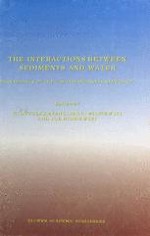Acknowledgements Conference Summary R. D. EVANS, A. PROVINI, J. S. MATIICE, B. T. HART and J. WISNIEWSKI/Interactions Between Sediments and Water: Summary of the 7th International Symposium 1-7 Sediment I Water Dynamics D. E. WALLING and W. HE /Investigating Spatial Patterns of Overbank Sedimentation on River Floodplains 9-20 R. JEPSEN, J. ROBERTS and W. LICK / Effects of Bulk Density on Sediment Erosion Rates 21-31 T. G. MILLIGAN and D. H. LORING / The Effect of Flocculation on the Size Distributions of Bottom Sediment in Coastal Inlets: Implications for Contaminant Transport 33-42 loG. DROPPO, G. G. LEPPARD, D. T. FLANNIGAN and S. N. LlSS / The Freshwater Floc: A Functional Relationship of Water and Organic and Inorganic Floc Constituents Affecting Suspended Sediment Properties 43-53 C. H. TSAI and J. Q. HU / Flocculation of Particles by Fluid Shear in Buffered Suspensions 55-62 P. M. STONE and D. E. WALLING / Particle Size Selectivity Considerations in Suspended Sediment Budget Investigations 63-70 Q. HE and D. E. WALLING / Spatial Variability of the Particle Size Composition of Overbank Floodplain Deposits 71-80 C. YEN and Y. LIN KEY / Variations of Bed Surface Sediment Size in a Channel Bend 81-88 M. STONE and B. G. KRISHNAPPAN / Transport Characteristics of Tile-Drain Sediments From an Agricultural Watershed 89-103 U. KERN and B. WESTRICH / Sediment Budget Analysis for River Reservoirs 105-112 A. I. PACKMAN, N. H. BROOKS and J. J.
